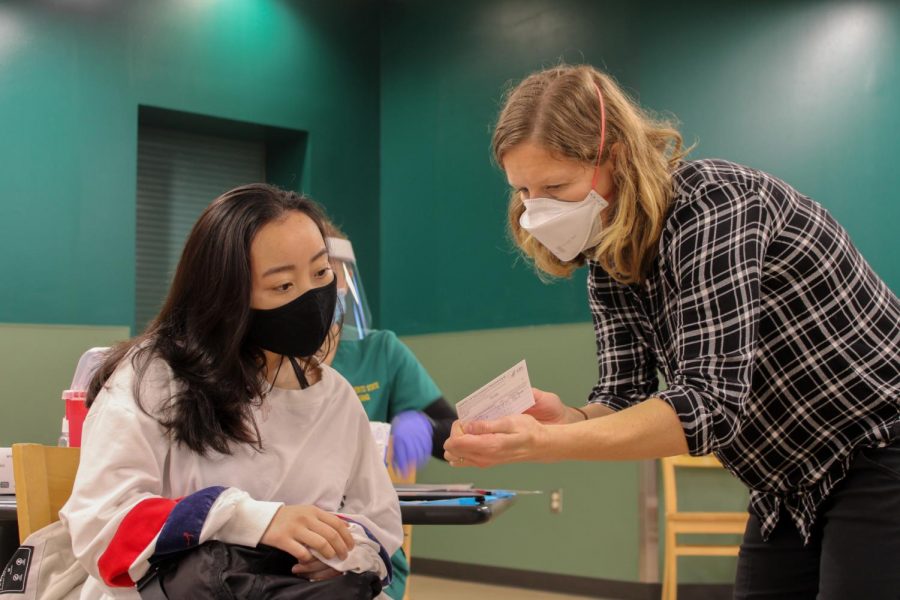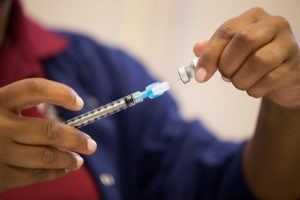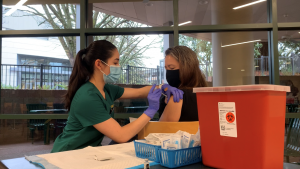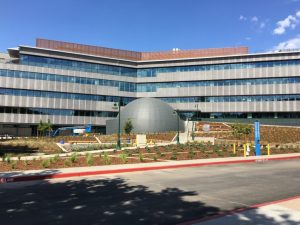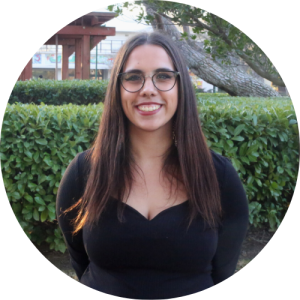FAQ: What you need to know about the COVID-19 vaccine at Sac State
Sac State students should be able to start getting the vaccine in March or April, says Ed Mills
(File photo) Rachel McMichael, nurse practitioner at the WELL, verifies the identity of Rica Co, second semester nursing student, before injecting her with the COVID-19 vaccine in the Brown Bag room in the Union on Thursday, Jan. 28, 2021.
February 4, 2021
As California begins to administer COVID-19 vaccines, Sacramento State has begun to give vaccines to the university community.
Sac State is currently administering the Pfizer vaccine to healthcare students with clinical placements as their shipment was delivered late January. Faculty, staff, and retirees ages 65 and older are also receiving the vaccine.
The State Hornet has organized this FAQ to provide answers for questions regarding Sac State’s and California’s vaccination plan.
Question: When can students get vaccinated? When can the general public who are not health professionals or essential workers start getting vaccinated?
Answer: While there is no exact date yet, Vice President of Student Affairs Ed Mills, said students should receive vaccinations in March or April on a first come first serve basis. Students must make an appointment to be vaccinated. Wearing a mask is also required.
The university will notify students who are eligible through a virtual invitation sent to their Sac State email. Furthermore, this invitation directs students to Sacramento County’s website to schedule an appointment and put them into the county’s system.
With a population of 30,000 students, Mills estimates 29,000 students would fit into the general public category with the university administering 200 vaccinations a day.
Overall, the general population at Sac State is estimated to be vaccinated by this summer, Mills said.
Q: Can Sac State require students who are returning to campus in fall 2021 to get the COVID-19 vaccine?
A: Sac State is not requiring students to receive the vaccine in order to return in the fall, but Mills said it is recommended students make an informed decision about vaccination.
Q: How many times do I have to take the Pfizer vaccine?
A: The Pfizer vaccine is administered in two shots and people are recommended to get the second dose within three weeks to a month from the first dose according to the Center for Disease Control.
Q: Where is the vaccination site at Sac State?
A: Sac State’s vaccination site is located in the Brown Bag Room set in the University Union as a walk-in clinic. The vaccination site could expand into parking structure 3, if needed, as stated by President Robert Nelsen in his spring address.
Story continues below the map.
Q: What will vaccination look like at Sac State for students?
A: When registering to be vaccinated, students have to provide information to the California Department of Health website that confirms their eligibility.
When arriving at the Brown Bag Room students will be temperature screened and asked if they have displayed symptoms of COVID-19, said Dr. Bronwyn Fields, an assistant professor at Sac State’s School of Nursing .
She further explained that students must have their OneCard to be placed at one of the four vaccination sites. Afterwards students will be screened again to determine if they are at risk to receive the vaccine. For example, Fields said if a student has gotten their flu shot two weeks prior, they are ineligible for the vaccine.
After getting the first Pfizer shot, students will be observed for side effects for 15 to 30 minutes. Some side effects of the Pfizer vaccine include tiredness, headaches, and chills according to the CDC.
Students will then wait three weeks before receiving their second dose where they will be notified by the university for an appointment.
Q: What is Sac State’s vaccination plan? What are the phases? Who is included in each phase?
A: Sac State’s phases mirror the state’s as the campus is a testing site authorized by California.
“This is all run by the state,”Mills said. “The county has asked us to provide vaccinations at Sac State for the Sac State community. We’re not a public vaccination site yet, we’re specific to Sac State.”
For students out-of-area, Mills advises students receive the vaccine at the nearest site in their area.
Q: What is CA’s vaccination plan? What are the phases? Who is included in each phase?
A: California will be vaccinating residents based on who fits into three separate phases: Phase 1A, Phase 1B, and Phase 1C. Each phase is organized by urgency by who the state decides needs the vaccine first.
Phase 1A is currently in progress which is divided into three tiers. Anyone who falls into the following three tiers can now be vaccinated.
Story continues below the image.
Vaccine Infographic by Emma Hall
In the first tier, acute care, psychiatric, correctional hospital staff, staff at nursing facilities, staff at assisted living facilities, residents in long-term care settings, paramedics, EMTs, and staff at dialysis facilities can receive the vaccine.
The second tier includes intermediate care facility workers, home health care and in-home supportive service staff, community health workers, public health field staff and staff at primary care clinics at various health centers.
Lastly, the third tier consists of staff at speciality clinics, lab workers, dental and oral health staff, and pharmacy staff.
California has entered phase 1B, which includes residents 65-years-old and older, education and childcare workers, those in food, agriculture, and emergency services. Like Phase 1A, 1B includes multiple tiers.
The second tier to Phase 1B includes individuals working in transportation and logistics, industrial, commercial, residential and critical manufacturing industries alongside those who work in sheltering facilities and services. Incarcerated and homeless individuals are also included in tier two if they are located in a congregate setting with high risk.
Phase 1C, the final phase includes people ages 50 to 64 years old, people 16 to 49 years old with underlying health conditions and disabilities that increase risk of COVID-19, and those who work in water and wastewater, energy, chemical and hazardous materials, communications and IT, financial services, government operations, and community essential functions.
The state’s Community Vaccine Advisory Committee shared on Wednesday that residents with disabilities or medical conditions that are considered high risk could be next in line to receive the COVID-19 vaccination at hospitals and clinics.
Q: I’ve been vaccinated, what now?
A: Fields recommends that individuals continue to wear masks and to social distance after being vaccinated. While both doses of the vaccine together have an efficacy of 95% according to the CDC, other members of the community will still need to be vaccinated. As the vaccine rollout is still in its early phases, experts are unsure if those who receive the vaccine can transmit COVID, despite being asymptomatic.
“We’re starting with the people most likely to get sick and, and then we’ll get to everybody else,” Fields said. “We are going to still need to keep wearing our masks and keep socially distancing, but feel a bit more confident that we’re not going to give it or get it.”


























































































































